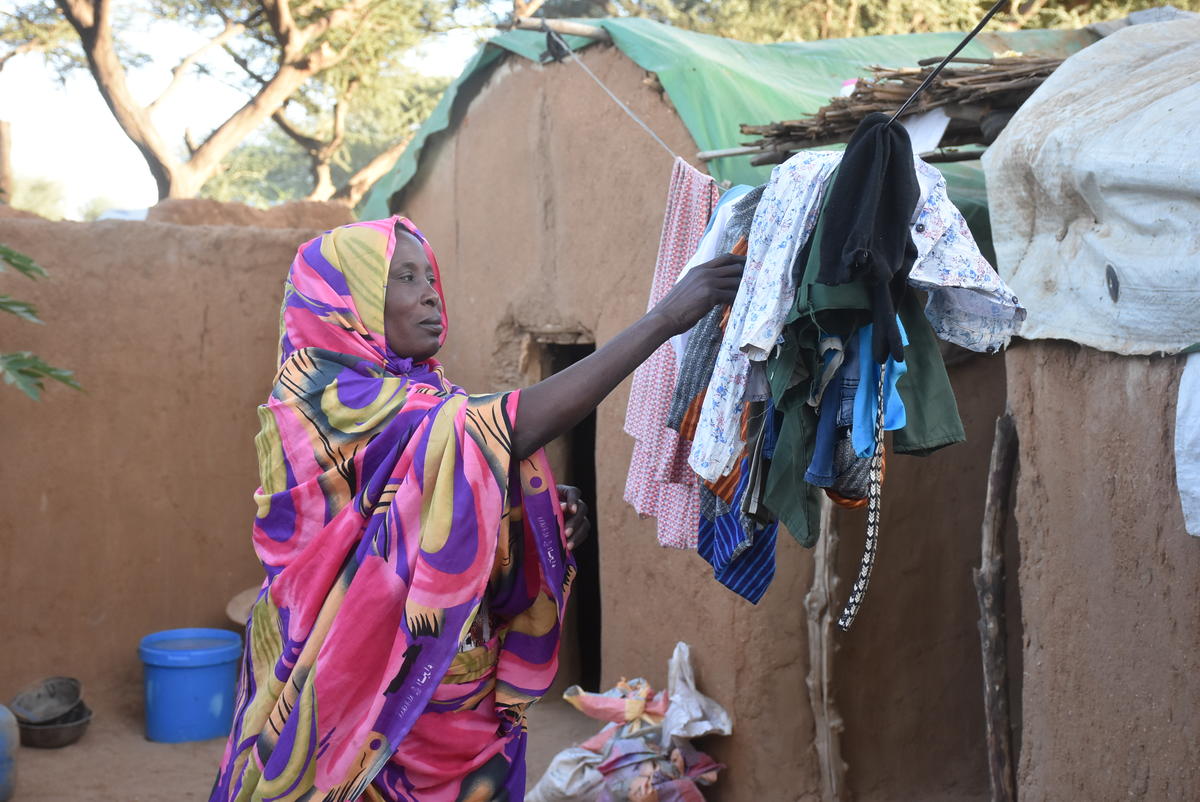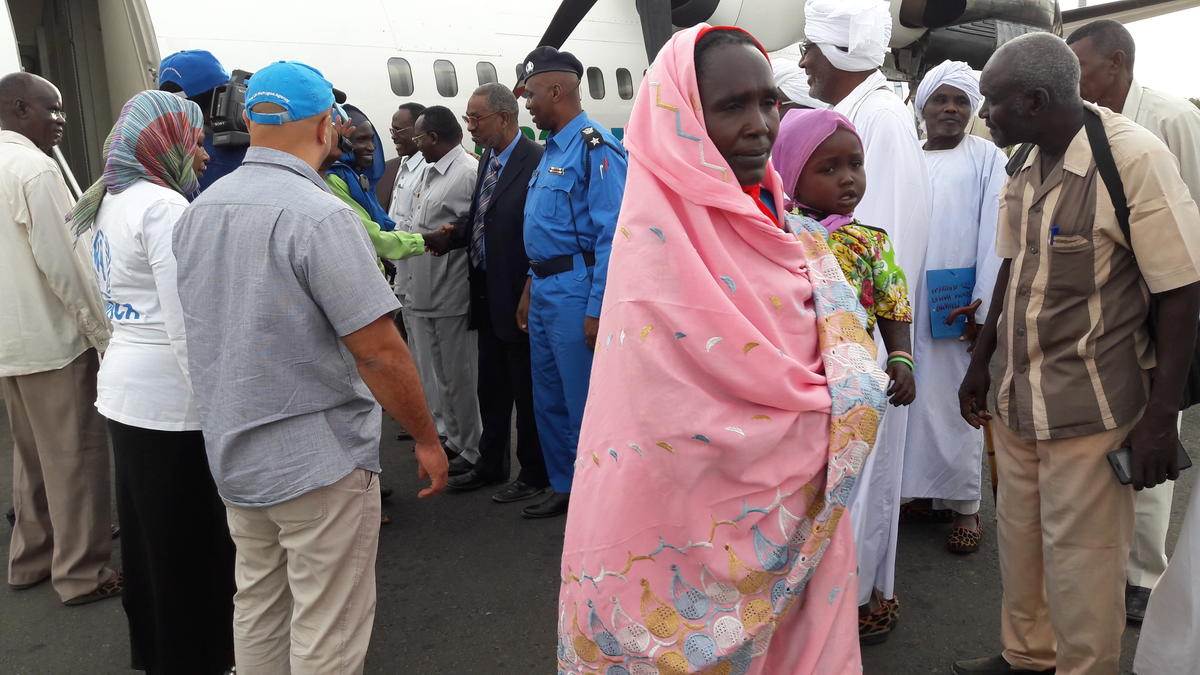UNHCR completes relocation of thousands of Darfur refugees to Chad camp
UNHCR completes relocation of thousands of Darfur refugees to Chad camp

TISSI, Chad, June 14 (UNHCR) - The UN refugee agency has completed the relocation of thousands of Darfur refugees from the volatile border area of Tissi in south-east Chad to a newly opened camp, Ab Gadam, deeper inside the country.
The last convoy left Tissi three days ago. In total, UNHCR and its partners moved 7,161 people over the past month - most of them women, children and elderly refugees. Some 3,086 other refugees travelled to Ab Gadam by foot and on donkey carts. These people fled inter-communal conflict in Darfur.
In addition to the urgency of moving refugees for safety reasons Tissi is also prone to bad weather. The skies are dark and the first new storms and heavy winds of the May-November wet season have hit the region, which is strewn with wadis that flood in the coming months and make roads impassable.
"Our main priority was to move refugees away from the border as long as roads are still usable. We have used all resources in the region and transferred refugees six days a week," said Djamal Zamoum, UNHCR's emergency coordinator in Tissi, describing the race against time to complete the move. .
"We are now turning our attention to other Darfur refugees scattered across 18 additional remote sites in the border area. A first convoy departed from Haraza village yesterday with 270 refugees. Our aim is to complete all transfers before the wadis are flooded," a UNHCR spokesperson added.
The refugees at these sites have been living in makeshift shelters with barely any protection against sun and rain. The local population share their few resources with them. Once heavy rains start, refugee locations will become cut off.
In the new Ab Gadam camp, UNHCR and its partners have been preparing for the rainy season. Staff are distributing food and non-food rations and UNHCR is pre-positioning relief items. On arrival, people like Mariam, receive relief items such as jerry cans, hygiene kits, sleeping mats, blankets and mosquito nets. New arrivals are also given material to build a shelter and the most vulnerable are helped by UNHCR's partners.
Mariam fled to Tissi in mid-May with her two children and her father after their village in Darfur was attacked and torched. "I just took my kids and ran," recalled the young woman, who has had no word from her husband and mother. She prays they will turn up.
Mariam did not feel safe at the border, where she could hear the sound of artillery, and so she was happy to move to Ab Gadam. "This is a good place for my children," she said on arrival there. "They can drink clean water and they can play outside without any worries."
Meanwhile, UNHCR and its partners have moved offices from Tissi to Bir Nahal, just 12 kilometres from the camp. Being close to the camp will allow the agency to maintain delivery of aid to refugees throughout the rainy season and to respond to needs.
Two temporary medical posts have been opened and UNHCR´s health partners will start to treat refugees locally. Before the move, refugees in need of treatment had to be taken to the main Tissi health post nearly 30 kilometres away.
While Ab Gadam is safer and easier to access, parts of the camp are prone to flooding. "We are therefore sensitizing refugees to settle only in designated areas and redirected those who are occupying flood-prone areas to safer grounds," said the UNHCR spokesperson.
The refugee agency is also working with its partners to provide sufficient clean water for all the refugees in Ab Gadam. Until last week, aid agencies had to truck water from the Tissi river and make it safe for consumption. UNHCR has started trucking in water from a nearby lake.
Since January, it is estimated that some 30,000 Darfuris have crossed into south-eastern Chad. The first wave of refugees fled conflict over gold mines in northern Darfur between the Binheissin and Rizeigat tribes, while a later group crossed because of communal violence between the Salamat and Misseriya tribes in Um Dukhun, an area of West Darfur lying just seven kilometres north of Tissi.
By Ruth Schoeffl in Tissi, Chad








